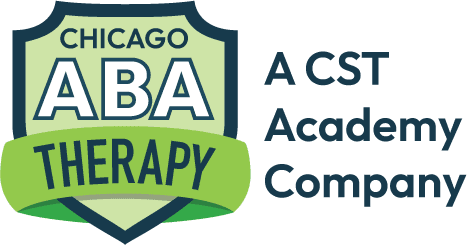Applied Behavior Analysis (ABA) therapy has revolutionized the treatment and understanding of Autism Spectrum Disorder (ASD) and other developmental disabilities. Among the various methodologies within ABA, Natural Environment Teaching (NET) stands out for its innovative and practical approach. But what exactly is NET in ABA therapy, and how does it benefit individuals with developmental challenges? This comprehensive guide delves into the essence of NET, its principles, techniques, and the profound impact it has on therapy outcomes.
Understanding Natural Environment Teaching (NET)
What is NET?
Natural Environment Teaching (NET) is a strategy used within ABA therapy that focuses on teaching skills in the natural context where they would typically be used. Unlike more structured teaching methods that may occur in a clinical setting or at a table, NET takes advantage of the learner’s natural environment, leveraging naturally occurring activities and interactions to promote learning.
Core Principles of NET
- Child-Led Learning: One of the foundational principles of NET is that learning is driven by the child’s interests and motivations. By following the child’s lead, therapists can create highly engaging and relevant learning opportunities.
- Natural Reinforcements: Instead of using artificial reinforcers, NET relies on natural consequences and rewards. For example, if a child correctly asks for a toy, the immediate reward is getting to play with that toy.
- Functional Skills: NET emphasizes teaching skills that are immediately useful and functional in the child’s daily life. This practical focus helps ensure that the skills learned are both meaningful and generalizable.
- Generalization: A key goal of NET is to help children apply skills across various settings, people, and contexts, promoting greater independence and flexibility.
Techniques and Strategies in NET
Incorporating Play and Interests
Play is a crucial component of NET. Therapists observe what the child enjoys and incorporates these interests into the learning process. For instance, if a child loves building blocks, a therapist might use this activity to teach counting, colors, or turn-taking.
Embedding Learning Opportunities
In NET, learning opportunities are embedded within everyday activities. For example, during snack time, a therapist might teach the child to request specific items, label foods, or follow simple instructions. This approach makes learning feel more natural and less like a formal lesson.
Using Everyday Interactions
Everyday interactions offer rich opportunities for teaching. Simple routines like getting dressed, brushing teeth, or playing with peers can be transformed into powerful teaching moments. For example, a therapist might teach sequencing skills by having the child follow steps to complete a task, or social skills by practicing greetings and conversations during playdates.
Prompting and Fading
To help children acquire new skills, therapists use various prompting strategies, such as verbal cues, gestures, or physical assistance. Over time, these prompts are gradually faded to encourage independent performance. For instance, if a child is learning to ask for help, a therapist might initially model the request and then slowly reduce the level of assistance as the child becomes more proficient.
Data Collection and Analysis
Despite the naturalistic setting, data collection remains a critical component of NET. Therapists meticulously track progress to ensure that the child is making measurable gains. This data-driven approach allows for continuous assessment and adjustment of teaching strategies.
Benefits of Natural Environment Teaching
Increased Motivation and Engagement
Because NET is based on the child’s interests and occurs in a familiar context, it tends to be highly motivating. Children are more likely to engage in activities they enjoy, making learning feel less like work and more like play.
Enhanced Skill Generalization
One of the significant advantages of NET is its emphasis on generalization. Skills learned in the natural environment are more likely to transfer to other settings and situations. This generalization is critical for achieving independence and success in real-world contexts.
Improved Social Skills
NET provides abundant opportunities for practicing social skills in natural interactions. Whether playing with siblings, interacting with peers, or participating in family routines, children can develop critical social competencies in a meaningful and relevant way.
Flexibility and Adaptability
The naturalistic approach of NET allows for flexibility and adaptability. Therapists can adjust their teaching strategies based on the child’s immediate needs and interests, creating a dynamic and responsive learning environment.
Family Involvement
NET naturally incorporates family members into the therapy process. Parents and caregivers can observe and participate in the sessions, learning how to support their child’s development in everyday activities. This involvement enhances the consistency and effectiveness of the intervention.
Implementing NET in ABA Therapy
Collaboration with Families
Successful implementation of NET requires close collaboration with families. Therapists work with parents to identify the child’s interests, routines, and daily activities that can be leveraged for teaching. This partnership ensures that therapy is aligned with the child’s natural environment and daily life.
Training and Supervision
Therapists need specialized training to effectively implement NET. This training includes understanding how to create naturalistic teaching opportunities, use appropriate prompting and reinforcement strategies, and collect and analyze data. Ongoing supervision and professional development are also crucial to maintain high-quality practice.
Individualized Approach
Every child is unique, and NET emphasizes individualized intervention. Therapists tailor their strategies to meet the specific needs, strengths, and preferences of each child. This personalized approach maximizes the effectiveness of the intervention and promotes optimal outcomes.
Natural Environment Teaching (NET) in ABA therapy represents a powerful and practical approach to promoting meaningful learning and skill development. By leveraging the child’s natural environment and interests, NET creates highly engaging and relevant teaching opportunities. The emphasis on functional skills, natural reinforcements, and generalization ensures that children can apply what they learn across various settings and situations, promoting greater independence and success. For families and practitioners in Chicago and beyond, understanding and implementing NET can make a profound difference in the lives of individuals with developmental challenges.
If you’re interested in learning more about NET and how it can benefit your child, contact Chicago ABA Therapy today. Our team of experienced therapists is dedicated to providing high-quality, individualized care to help your child thrive.










